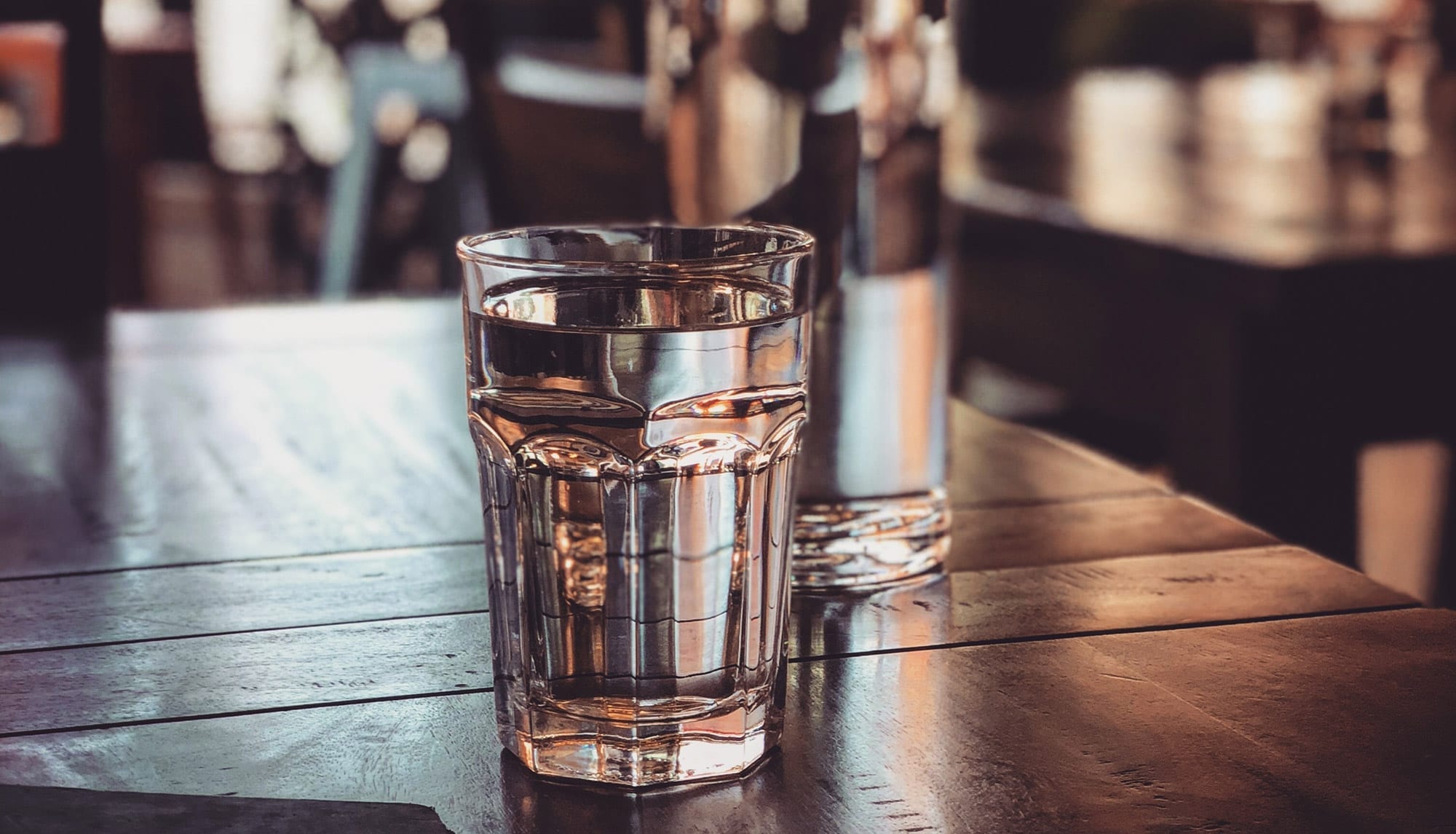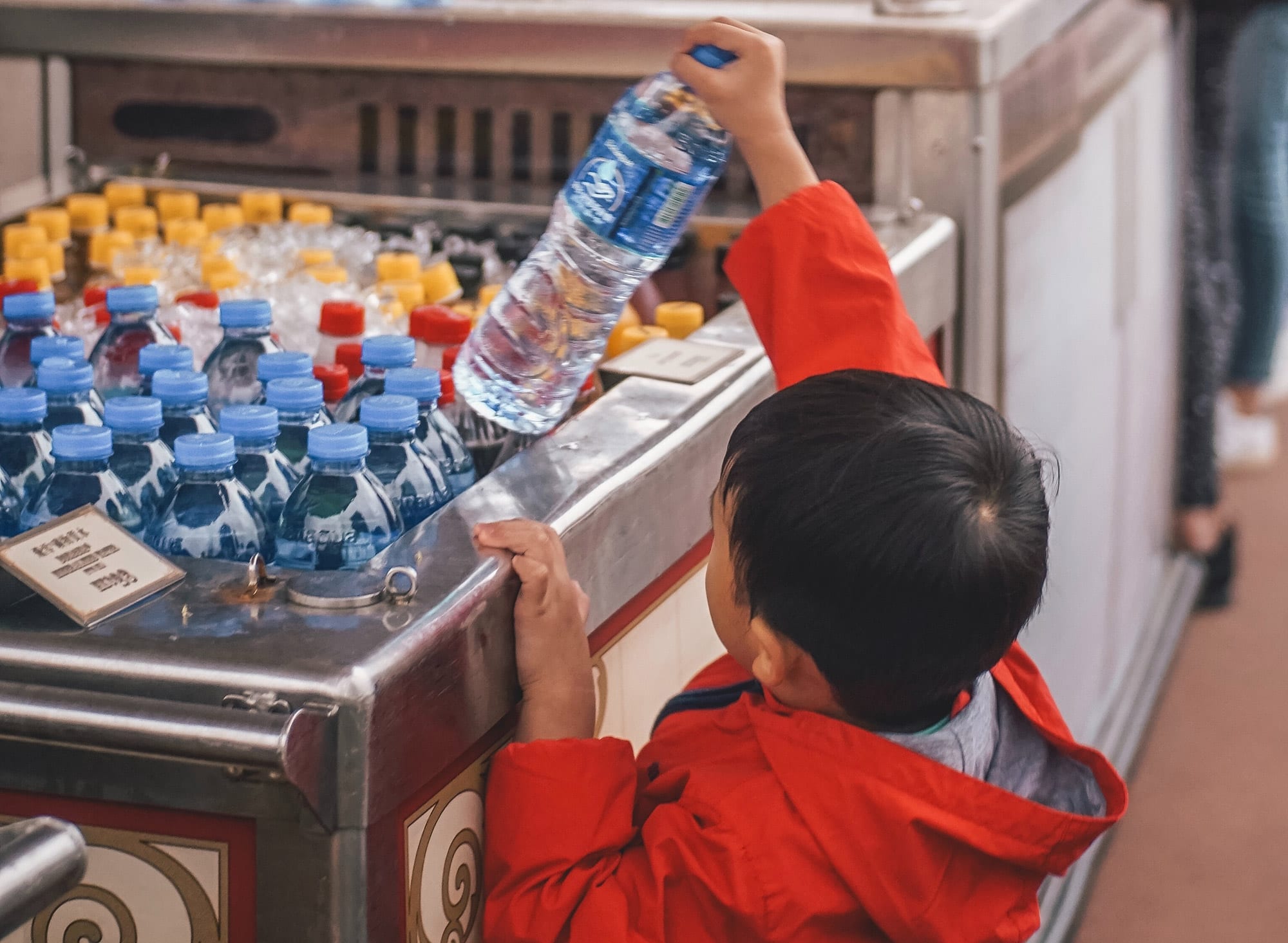The Thirst Debate: Tap vs Bottled Water
Bottled water is often regarded as unsustainable. But is tap water always the better option? REVOLVE’s Senior Sustainability Advisor, Peter Easton, presents a wider and balanced perspective.
A matter of taste?
There are many strong preferences for or against bottled water. Those who drink it may believe it to be safer or healthier than tap water. In some countries, drinking bottled water is a standard part of the food and drink culture. In others, bottled water is criticized for being too expensive or for using unsustainable packaging.
The UK’s municipal water leakage in just one day – 3 billion liters – is equal to the volume of bottled water sales in a whole year!
In reality, both tap and bottled water are safe to drink in Europe and most other developed regions. Both options are governed by strict quality and safety regulations and are regularly monitored under the EU Drinking Water Directive (DWD) and the Natural Mineral Water Directive (NMW), which set limits on the concentrations of minerals, microbes and man-made chemicals (such as pesticides) which may present a health risk at higher concentrations. The DWD regulations apply to tap water and bottled waters (spring water, table water), but not to natural mineral water. There are no limits for specific man-made chemicals in NMW, but producers must demonstrate their total absence in line with the concept of ‘original purity’.
For tap water and table water, whatever the quality of the raw water supply – be it surface water or groundwater – any treatment is permitted to fulfil the requirements. However, for bottled spring water and NMW, the water must naturally comply with regulations without treatment or disinfection.

Tap water may come from any water body, including surface water, groundwater and seawater with the assumption it can be treated as necessary to achieve quality standards. In contrast, bottled NMW and spring water must originate from protected groundwater that is naturally safe due to the natural filtration properties of the rocks through which it passes, travelling for tens, hundreds, or even thousands of years. Safety at the point of extraction is ensured through careful quality monitoring.
Disinfection of water may cause undesirable disinfection by-products (DBPs). For example, chlorination reacts with natural organic matter to generate trihalomethanes (THMs), which are carcinogenic at high concentrations. Therefore, THMs have a defined maximum concentration. DBPs do not occur in bottled spring water and NMW as they must be safe without disinfection.
The only processing permitted for spring water and NMW is the separation of unstable elements. These are most commonly iron and manganese which occur naturally in many groundwater bodies. On exposure to air. they create insoluble but safe oxides which discolor the water to make it appear unattractive to drink.
Cultures without a strong bottled water tradition often misunderstand why others drink it. While some people drink it because they (incorrectly) question the safety of tap water, the majority consume it as a ‘drink of choice’ as they would tea, coffee, soft drinks, juice or wine. Some people value the minerals in NMW for health, although in reality, the amount of beneficial minerals (such as calcium) is small compared to what we get from our food. Sceptics may also ask: why buy expensive bottled water when tap water is so cheap? But that is like saying: “Wine is wine, why to buy a top Bordeaux when the local vin de pays is much cheaper?”. Each NMW and spring water has a distinct taste defined by the mineral concentration and balance. Carbonation, if present, also gives a specific mouth feel and taste. In contrast, tap water taste changes from city to city and may carry an undesirable chlorine taste or varying levels of hardness (quantity of dissolved calcium and magnesium). The choice of water is mostly down to consumer preference in the way that anyone may prefer a certain wine or brand of blue jeans.
Paying the price
Regarding the ethics of bottled water, critics complain about the wasteful use of bottles, especially single-use plastics. But it is worth knowing that by regulation NMW and spring water must be ‘bottled at source’ which means it goes directly into the sealed package that will reach the final consumer without any further contact with pipes, storage tanks, treatment chemicals or exposure to air, all of which may present a contamination risk.
The most commonly used plastic for bottles is polyethylene terephthalate (PET). The advantage of PET over glass is that it is lighter and needs less energy to be transported. PET also requires less energy for recycling than glass or aluminum. As technical challenges are overcome, recycled PET is becoming more common. Plastic – in all its forms – is a common source of litter, but it is the responsibility of consumers to avoid littering of any material and to support recycling schemes.
Just 1% of the average 150 liters of high-quality tap water used per day is for human consumption.
Tap water also has ethical questions to address. Leakage rates can be as high as 30-40%, especially in old distribution systems of older cities where repairs and pipe replacements are very costly due to the disruption they cause. In the UK, the municipal water leakage in just one day (3 billion liters) is equivalent to the volume of bottled water sales in a whole year! While the cost of tap water per liter is very cheap compared to bottled water, it is worth asking why. A key reason is that we buy it in bulk. When we buy bottled water, we may buy 1 liter per day, with 100% used solely for drinking. For tap water, Europeans use on average 150 liters per day per person and yet only consume 1 to 2 liters – just 1% – despite the fact that 100% is treated to a very high quality and pumped and piped directly to our homes (Americans use 340 liters per day per person of tap water). While other uses such as cooking, bathing and washing dishes require safe water, around two-thirds are ‘wasted’ on toilet flushing, washing clothes, and watering gardens, in addition to the leakage mentioned. Water is also wasted by the tendency to run taps until hot or cold. While some households have a water supply with a dual ‘grey water’ system whereby low-quality water is used for non-consumption purposes, this option remains relatively rare and expensive and has its own risks.

Ranging from the ethics of bottled water packaging and price, to the contamination risks from hormones and pesticides in tap water, there are criticisms for both types of drinking water. It is important to bear in mind two facts: First, almost none of our consumer choices have zero risks. The aim of legislators, manufacturers and ourselves is to minimize risk.
Second, the presence of a potentially harmful mineral or contaminant does not automictically present a health risk, but depends on concentration and exposure. Too many critics are ready to distort such messages to promote a predetermined agenda either for or against a product or business sector. The reality is that our scientific and regulatory experts and water providers are aware of the risks and do their best to manage and minimize them. Of course, there will always be skeptics and errors made.
Regarding the cost of water, any of us can get water for free by walking to a natural spring with our own container. But, if we want the water to come to us, either in shops or through our taps, that’s a service we must pay for. The cost of water provision covers permits, pumping, treatment, testing, and delivery (by bottle or pipelines). Many of us are lucky that safe drinking water remains one of our cheapest life essentials.
As a water professional with 30 years’ experience in both municipal water supply and bottled water, I am confident that our water supplies in Europe are as safe and ethical as ever before. But I am not complacent. Water supplies, as with most things in life, will never be 100% risk-free. We need to constantly work on risk reduction and mitigation. And of course, we need to address the impacts our choices have on the natural environment and collectively reduce these. One of the best ways to do this is by promoting a circular economy, whether this means recycling the packaging we use or making sure that the water we use is returned safely to the water cycle unpolluted and in the right places.